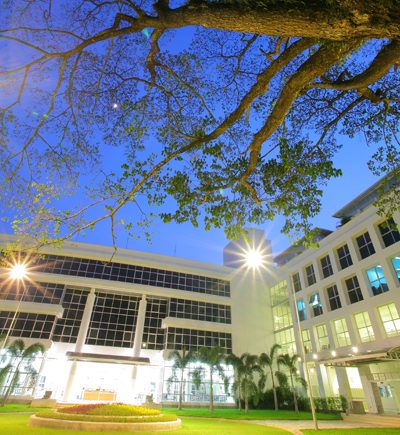 Chiang Mai University (CMU), a main government university in northern Thailand, has 25,394 students and 1,714 academic staff (2004). The Thai government has proposed CMU to be the aviation hub for Greater Mekong Sub-region (GMS) nations including Laos, Burma, China, Cambodia and Vietnam, and has recently declared Chiang Mai as one of three ICT (Information and Communication Technology) Cities. The government activities cover the development of e-tourism, e-business for handicraft industry, e-commerce, e-government, e-learning, alternative media, game, animation, mobile, e-business for SMEs and larger organizations. The city provides modern infrastructure for international business investment, because its economy mainly depends on tourism handicraft and software businesses. CMU has just established a new college called College of Arts, Media and Technology (CAMT). CAMT focuses on human resource development and innovation in ICT for tourism, handicraft and software industries in Northern Thailand. CAMT is aiming at offering undergraduate programs in software engineering, animation, e-tourism and handicraft design. At a post-graduate level, CAMT grants degrees for both Master’s and Doctoral studies for experienced knowledge workers. Research groups are set up in the college to support industrial research.
Chiang Mai University (CMU), a main government university in northern Thailand, has 25,394 students and 1,714 academic staff (2004). The Thai government has proposed CMU to be the aviation hub for Greater Mekong Sub-region (GMS) nations including Laos, Burma, China, Cambodia and Vietnam, and has recently declared Chiang Mai as one of three ICT (Information and Communication Technology) Cities. The government activities cover the development of e-tourism, e-business for handicraft industry, e-commerce, e-government, e-learning, alternative media, game, animation, mobile, e-business for SMEs and larger organizations. The city provides modern infrastructure for international business investment, because its economy mainly depends on tourism handicraft and software businesses. CMU has just established a new college called College of Arts, Media and Technology (CAMT). CAMT focuses on human resource development and innovation in ICT for tourism, handicraft and software industries in Northern Thailand. CAMT is aiming at offering undergraduate programs in software engineering, animation, e-tourism and handicraft design. At a post-graduate level, CAMT grants degrees for both Master’s and Doctoral studies for experienced knowledge workers. Research groups are set up in the college to support industrial research.
To ensure that all graduates of the College of Arts Media and Technology can apply innovative knowledge into an international environment in order to foster the development of the knowledge-based economy. Thus to ensure that we are the
“International Knowledge Worker”
- Educational Management; organize a course of study that focused on academic excellence. Responding to the national development strategy of Thailand 4.0 and producing graduates who are good, smart, knowledgeable, practical and international.
- Researching; research and develop research collaboration with the digital industry. Create digital innovations that can be used for real purposes and able to transfer technology to industries or use it commercially to generate income, including disseminating research work to the international level.
- Academic Services; provide academic services to society in order to apply knowledge of information technology to the benefit in both forms for earning income and social development.
- Management; develop administrative and management systems using information technology under the regulated university system with the principles of good governance efficiency and effectiveness.
- To develop human resources and new knowledge to support academia
- To develop Chiang Mai University’s academic excellence in the area of information communication and technology for tourism, arts, and handicraft-design industries.
- To develop Chiang Mai University’s academic excellence for alternative media i.e. e-newspaper, e-radio, web TV etc.
- To support the investment of government and private sector’s and to improve the competitiveness of northern region by building Chiang Mai as a center of sustainable development in GMS area
“Toward creating innovation to sustainability”
- Provide graduates training in human resource management in order to meet the requirement of tourism, handicraft and software industries
- Research on knowledge innovation to support tourism, handicraft and software industries
- To support learning and decision making for large-sized organization by the use of knowledge management systems
